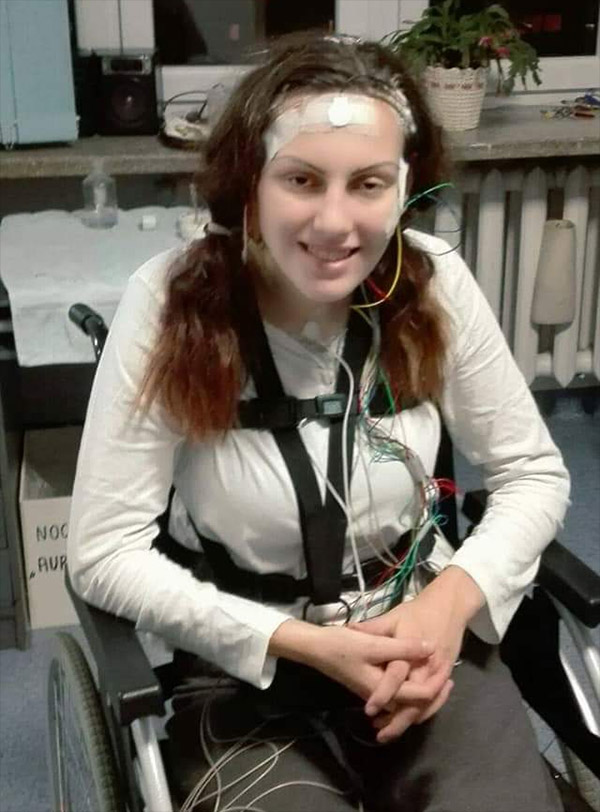Introducing our latest campaign to raise awareness!
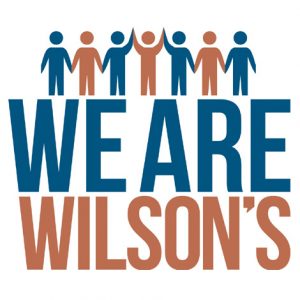 We are collecting patient stories and photographs to post on our website, Facebook and soon, Instagram.
We are collecting patient stories and photographs to post on our website, Facebook and soon, Instagram.
The Wilson Warrior stories have proven to be inspirational and we think we need a way to collect any story.
If you want to share your story please include a photo and email them to judi.keller@wilsonsdisease.org.
You should be an adult or have a parent give you permission to do this. We reserve the right to edit.
#wearewilsons
Introducing our YouTube Channel. We continually add stories. We can help you add yours too!
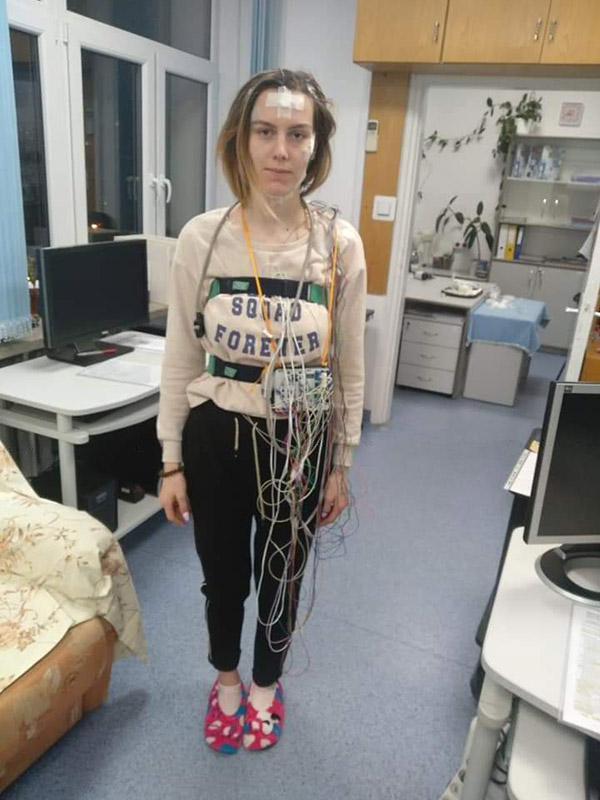
Aneta Sajek
I live in Poland, currently studying and working. I was 16 when the first symptoms of the disease appeared. In my case, they were only neurological. I became dependent very quickly. In 2016, after about two years, the diagnosis was made. I get treated, the results, my condition and well-being improve.
The onset of the disease was very difficult for me, a young, so far independent woman, who is becoming more and more dependent on third parties every day – that was the worst. The diagnosis took a long time and my condition was getting worse day by day. Doctors wanted to treat me for mental illness because they didn’t know what was wrong with me. It was the most difficult time in my life, I am glad that I can live independently and enjoy life again.
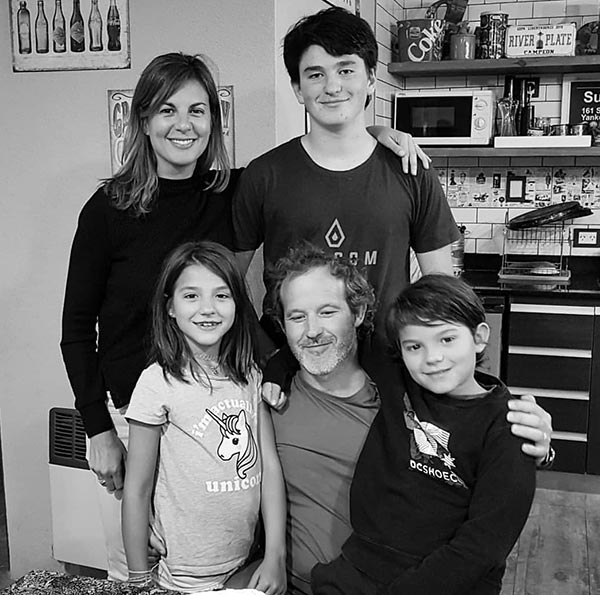
The Salas Family
We’re the Salas family. We live in Argentina. We have 3 kids, two with WD: Valentino (15) and Lola (9)
Lola was 5 when the disease was discovered on May 31, 2015 and getting a diagnosis was not easy. Lola had no symptoms; she only had to had a pre-surgical analysis done and it stated that her liver enzymes were excessively high. It took us one year to get a diagnosis, with blood tests carried out every 20 or 30 days, until a liver biopsy was finally performed.
Following her diagnosis doctors studied her brothers, and they informed us that Valentino also has the disease. Luckily they’re both without symptons, but it’s very worrying to know that it is a lifelong disease.
Currently they are being medicated with zinc acetate, and we follow a low copper diet.
In our country WD is unknown. There are no statistics and it’s very difficult to find doctors who know about it.
We know that we are lucky because our children are healthy, but we can not stop thinking that if we had not detected the disease on time the story would be very different.
From our roles as parents we try to inform people about Wilson Disease. Knowledge is the best tool to diagnose the disease on time!
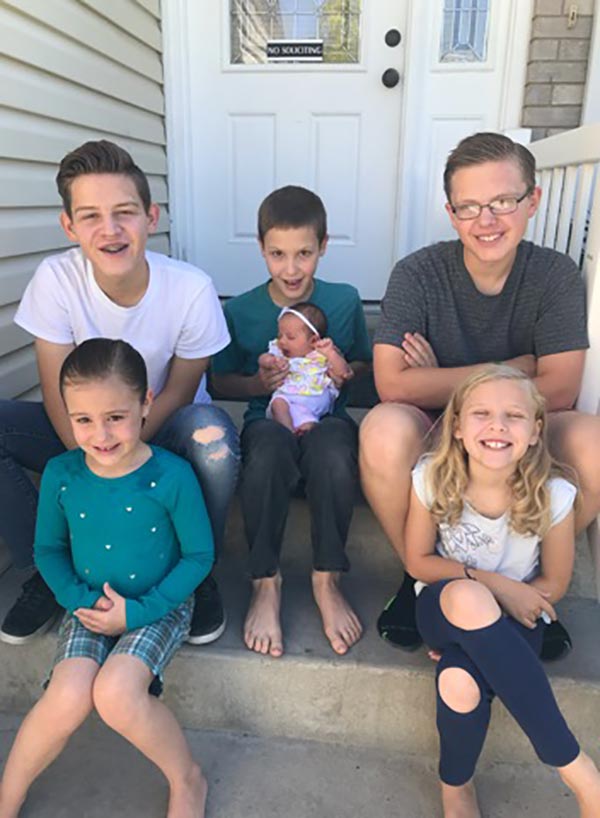
The Wells Family
In 2016, my son started having a lot of bloody noses. We live in a dry area, so we didn’t think much of it. Even the doctors said it was due to the climate. But they were getting so bad. They were daily occurrences, and there were several times that he even had blood coming out of his eyes. That August, he got sick with what we thought was a stomach bug. That was a Saturday evening, but by Monday he wasn’t feeling any better, throwing up if he ate much more than a bite at a time..
Tuesday evening, we noticed that he was looking yellow, so we decided to take him in, knowing that that could be a sign of problems with his liver. After doing some labs at the urgent care, they determined he needed to see a specialist up at the Children’s Hospital which is three hours away. They were going to schedule us sometime within the next week or so, but then the INR results came back. His blood is not clotting well, so they told us to go to the ER children’s hospital that night. We got there in the middle of the night (esrly Wednesday morning), and after lots and lots of tests, they determined that his liver failed. Within 24 hours after we got to the hospital, his kidneys shut down and he needed continual dialysis. He was dealing with encephalopathy and was going downhill quickly. His bilirubin and ammonia levels were skyhigh. Within 36, he was in the ICU and on the transplant list. That evening (Thursday) they diagnosed him with Wilson disease. The doctors said this was a blessing because it would put him higher on the transplant list. Two days later (Saturday), they found a matching liver, and he went in for surgery late that night. (Early hours of Sunday morning). It was a rough recovery, but we were so grateful for the outcome. Within a couple of weeks, they tested all of our other children. It was determined that our two girls , age 3 and 6 at the time, also had Wilson disease. Our other two boys were carriers. The doctors did a liver biopsy on each girl to determine where to start on treatment. They were surprised to see how much copper had already accumulated with them being so young, and my three-year-old had even more scarring on her liver than my six-year-old. The girls are both on Trientine, And though it has been a pain to get the medicine at times, they have responded well to treatment. We are wanting to get them on zinc, but so far they have both not tolerated it well at all. They throw up violently, on a daily basis with zinc (galzin and gluzin-which was worse for both girls), and their liver team decided it would be better to stay on the chelating medication to prevent them from having problems with throwing up every day. They told us that we could try other forms of zinc overtime to see if we could find one that they tolerate. In November, zinc called a zinc bisglycinate that they both seem to tolerate really well. However, I am not 100% sure if it will work like the other zincs, and I’m a little nervous to switch to it as they would have to take it three times a day. One challenge with young kids, is getting them to take your medicine when it’s time. My now seven-year-old struggles almost every day remembering to take her medicine. I’m not sure if it’s an attention span thing, or lack of desire to take the medicine, but she’s only on one pill a day. The fight but it takes every day makes it hard for me to ever want to go on the zinc permanently with her. I’m worried she would not take her medicine like she should, and cause further problems. We had our sixth child in July, and were able to get her Genetic testing, which confirmed that she too has Wilson disease. Our Liver team is currently in the process of deciding where to start with treatment for her. Typically, they would just start on zin genetic testing, which confirmed that she too has Wilson disease. Our Liver team is currently in the process of deciding where to start with treatment for her. Typically, they would just start on zinc, however, with how much copper my other girls livers had already accumulated at a young age, they are looking into where they should start with the baby. Overall, we are grateful for the way things have gone for us. We know that things would’ve been a lot different if it affected our son neurologically. A quick liver failure with a transplant was a huge blessing compared to what other people are dealing with.
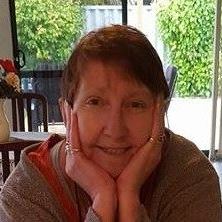
Susan Kuiper
Hi everyone my name is Susan Kuiper and this a just a taste of my life living with Wilson Disease.
I was the first person in Australia to be diagnosed with Neurological Wilson’s Disease, and I want to spread as much knowledge about the disease as I can.
I was born in East Fremantle, Western Australia, 28th February 1965.
December 1979 through January 1980, I was on a family holiday. When I guessed there was something wrong with me. All I wanted to do was sleep, and use my bowels A LOT. I did notice my bowel movements were black in colour, but what did I, a 14-year-old girl, know?
I was misdiagnosed with Hepatitis (type A) (don’t quote me though). I do remember my mum being told to wash my dinner utensils and bedding separately from the rest of the family.
I finally ended up being diagnosed with WD age 15 in 1980, mainly due to my Nanna (Maternal Grandmother), who remembered that I had two first cousins die from this thing called “Wilson Disease” on my father’s side of the family. Not long after, my younger brother was also diagnosed with WD (unlike myself, he refuses to talk about WD). As this is my journey, I will not go into details about his.
Living in Australia, the doctors here are uneducated on this rare illness, so I figure the more people I can tell, the better.
Early Diagnosis
At age 15, I had just started my Upper School with the intention of being a Physiotherapist, until my cousin, who was one, said, “Oh, you get to play with dead bodies”. So I changed my mind and was going to be a school teacher. However, the WD had other plans. My fatigue was so bad that I was falling asleep in class. I’m not a time-waster so I ended my schooling.
I was put on the Disability Support Pension at 15 years old.
I do remember the blame game amongst my Mum and Dad. Believe it or not, I took it in stride. Until, and this memory that still haunts me, I could hear Mum out in the kitchen doing the dishes. I thought I could hear her crying. I went out to her gave her a hug, and asked, “What’s wrong?”
She replied, “It’s my fault you’re sick”.
I almost cried with her, seeing her in pain. Instead, I said to her, “I understand you think it’s your fault. I’ve heard you and Dad blaming each other. From the little I know, it took you both to make me, and I don’t blame either of you, BUT IF YOU’RE GOING TO CRY, JUST PLEASE DO IT WHERE I CAN’T SEE IT OR HEAR IT!”
Then I spent close to two years in bed with my legs raised. I had Oedema so bad that my legs began to split. All said and done, I didn’t want to remain on a Disability Pension (yes, it would have been easier, but I didn’t want easy). I wanted to LIVE.
In July 1982, I started at the Melville Rehabilitation Centre. Within two days of arrival there, I was asked if I would like to sit for Public Service Exam. HELL YES!!
I sat for it and must have passed 27th July 1982. I started working for the Australian Customs Service, doing clerical duties. During that time, I wrote a DOS Program to facilitate the movement of cargo in and out of the Port of Fremantle. It was adopted.
I don’t remember exactly when, but the Customs Service wanted Officers who were already employed. I put my hand up; I learned the law (in regards to Customs) amongst other things. In the exam, I scored a 100% mark. I was Dux of the class.
Okay, back to it, I was put on D-Pen, to which I ended up allergic to (I got med-induced Lupus), given some more meds to keep the Lupus under control (the Lupus meds had side effects every 6 months). I would need to go to Sir Charles Gardner Hospital to get my retinas checked (I won’t bore you with the detail of the type of testing, suffice to say they took 2 hours). Basically the meds to treat the Lupus had the potential to make me blind.
I was on D-Pen for a total of 13 years, by this time I was married and it was time for me to try and have a baby. It was 1987 or thereabouts.
I need to add in here, before I even considered getting pregnant; I went to my specialist and asked a whole series of questions. Two of which I remember. The first, and for to me, THE most important, was would my baby suffer from WD. The answer was “no”. The second question was would my baby, in any way, shape, or form, carry the recessive gene. The answer was “no”.
I was taken off D-Pen and put on zinc (the beginning of the end). In 1990, I gave birth to a healthy baby boy Steven. He is my pride and joy.
Neurological Wilson Disease
I was working for the Australian Customs Service, when unbeknownst to me, I was on the downhill run to getting the neurological aspect of the disease.
I was never told that my liver could become overloaded with copper, and that it could attack the brain, therefore I wasn’t aware of what to look for.
At Customs we were required to keep notebooks. I noticed my writing was getting worse. I can remember saying to myself, “You’re getting lazy, Susan,” on my last working day.
Another sign that the neuro WD was raising its head, was I started drooling, which was laughed off by both me and my then-husband. We said, “Oh, like mother, like son”.
Then came the most dangerous sign. I started rear-ending cars (usually big ones with tow balls so my car came off worse).
It was at that point neuro WD hit HARD.
I went from a working wife and mother to being bedridden, unable to talk, walk, feed, dress, or even toilet myself without assistance. I was 28.
Because I worked for the Federal Government, I had to go and see their Medical Officer, who told me to come back in 6 months. I waited the 6 months, went back and saw him, he took one look at me, and I was forced into retirement at age 30.
Now back to my life with neuro WD. I’m not tooting my own horn but I’m highly intelligent.
One of the things that I can remember was asking for a drink. To my own ears, it sounded like I was asking for a drink, when in fact my speech was unintelligible. This lead to my first PC (an old 386 DOS base). It was my only means of communication and with it, I could ask for a drink.
The loss of my speech was probably one of the hardest things for me to cope with personally.
Prior to all of this, I, my son, and my husband weren’t receiving any form of outside help.
I was in and out of hospitals. No one knew what to do with me. Here in Australia, I was a first.
With my own personal journey with neuro WD, I got Parkinson-like tremors x 1000. Every part of my body shook from the head down. The right side of my body was more affected than the left (and of course I’m right-handed).
I can remember that for no apparent reason, mainly my right arm would shoot up in the air, go behind my head, go back to my lap, and then repeat. My husband ended up sewing some Velcro on the family room chair, so that when I could join the family, I could open the Velcro, slide my hand on it, close the Velcro, which then stopped the right arm bursts.
The whole body movement was non-stop 24 hours a day, so I got no sleep.
Then came trouble with eating. It was not uncommon that more than several times around the table my food would go down the wrong hole and my husband had to perform the Heimlich manoeuvre.
I can remember my approximately 3-year-old son tying up my shoelaces (and doing a damn good job of it, for his tender age). He also used to button up my blouses.
Falls were a common occurrence.
Help From Doctors
As I said, no one knew what to do to help me. In the end, they decided if I was healthy enough, I would go on the liver transplant waiting list. I came home from the hospital with a pager. I was now on the list.
I am sure I have probably left a heap of things out that happened between the first neuro symptoms, and while I’m not a believer in crying over spilled milk, what has happened has happened. I deal with it.
I was officially put out to pasture from the Australian Customs Service, a job I had been in for close to 13 years on 17th May 1995. A job had that if I not gone neuro, I would still be in today.
I had a brain MRI done. It showed exactly what parts had been killed off by the copper, my fine and gross motor coordination. I can now at least hold a pen without it flying across the room, however, my handwriting has never recovered. I will try my best to write a note to take out, let’s say to the pharmacy, of things I need to get, but in the short two-minute drive it takes me to get there, I cannot read what I‘ve handwritten.
Which then leads me to the second part of my brain killed off, my short-term memory.
Don’t worry I will get to Dr. Schienberg and BAL.
Mrs. Wobble Goes to School
My son had just started Primary (Elementary) School and as his Mum, I wanted to walk him up to his classroom. My lack of coordination and the WD gait meant for me, I would take a step, kiss dirt (fall over), get back up, take another step, and kiss dirt again. Rinse and repeat for the entire walk up to his classroom, and then back again. My son knew me no other way. He was patient.
The thing got to me, though, was NOT ONCE did a parent ever come over and ask me if I was okay or did I need a hand. I am not the person who ever asks for pity, and if I can do it, I bloody well will. What eventually did get to me was I could see the other parents all huddled in groups whispering behind closed hands. Assuming because I couldn’t walk a straight line and combined with all of the falls every day, I was either a drunk or a drug addict.
It got me thinking if a parent can judge someone based on outside appearances alone, what sort of message would they then pass onto their own children?
It was then I put the English language to use. I wrote and self-published, Mrs. Wobble Goes to School. It was written for children aged between 5 – 10 and illustrated. I presented at a mother’s day assembly. I won’t lie, the look of all the parents who had prejudged me, and the “OH WOW” factor gave me great personal satisfaction.
However, what I gained more satisfaction from, was traveling from Primary School to Primary School, not so much telling my story, but teaching children not to judge anyone who may be in a wheelchair or anything out of the normal. My parting words to every child I had the privilege of speaking to were, “Don’t judge a book by its cover, open it, and you might be surprised at the gift that awaits you.”
The Right Doctor
One day, I was laying in bed, with nothing to do. I picked up the Yellow pages, was trying to flick through the pages, and all of a sudden four letters jumped out at me W.I.S.H. (Western Institute of Self Help). I rang them and said, “Please help. I’m dying.”
“From?” was the response.
“Wilson Disease.” To keep this part short, that is how I found the WDA in the States. I was given Dr. Schienberg’s name and number.
I can remember my now ex-Husband, ringing him, telling him I was at home with a pager for a liver transplant. The doctor said, “Take back the pager. Get your Doctor to call me”.
I did the very next day. It was from there I was put on BAL Injections, one per day for five out of the seven days. I ended up on BAL for a total of twelve months, at which point I was the best I was ever going to be.
My neuro WD then remained steady, right up until around mid-2017, when I noticed the lethargy had kicked in again and my drooling was back. Then the falls started again, anywhere up to four per day, 7 days a week, except this time I couldn’t even use furniture as a prop get myself back to my own feet.
Now, almost 25 years later, for some unknown reason, my copper levels have risen. I have been compliant with whatever medication I have been given, fortunately, while nowhere near as severe as when I first went neurological.
I am also now unable to walk without assistance. I need a walking frame, I also have an Electric Wheelchair (provided by disability services), for two reasons, one to reduce my falls, the other so I can get out and about again.
I am now unable once again to clean my own home, mow my own lawns, and cook my own meals.
40 years after I was officially diagnosed, and now 25 years after being neurological, my health started on its downward spiral. I didn’t know if I had a new illness to add or whether it was WD. To a degree, I’m thankful it was WD (better the devil you know).
I reached out to my treating doctor of 25 years ago, since he was the only one who knew of my history (WD), I didn’t know what to do. Did I need to go back on the BAL injections, up my medication, finally have that liver transplant? I was lost. My doctor of all those years ago had no idea what to do with me again.
I ended up thinking, “To hell with this! I need to do something,” so I upped my Trientine intake from 1200mg per day to 1800mg. While progress has been very slow, my WD seems to be responding. I am still falling over randomly; HOWEVER, I have gone from falling 4 times in a 24 hour period, to now one to two falls per month (hush, Susan. You will jinx yourself).
As for any distance, still something I’m unable to do (for every negative there is a positive). I am now able to do some house cleaning. I push myself to my limit, but I also know when to call it quits.
The other thing that happened, I was no longer able to clean my home, granted it used to take me time before my neurological condition went downhill, but I was able to clean it.
This time, however, as luck would have it, six months earlier I had applied to WANDIS (Western Australian National Disability Insurance Scheme), I had just been approved.
With WANDIS I suddenly had home help. A lady would come in and clean for me, still to this day I have trouble letting someone else clean for me, and whenever my body allows it, I will help out. I feel guilty just sitting and watching, I know I shouldn’t, but I do.
I had an Occupational Therapist who came into my life and made it easier for me to cope with the return of the living difficulties. She started with small things initially, like a toilet raiser, grab rails, and then we moved onto the bigger things.
The Doctor’s over here still have no idea as to treat this illness, so it was left up to me.
I decided that while it is a slow process, I would keep up my intake of Trientine.
It’s now gotten to the stage in order for me just to walk around the home, I need a walker.
Its life, s#@t happens
E&OE
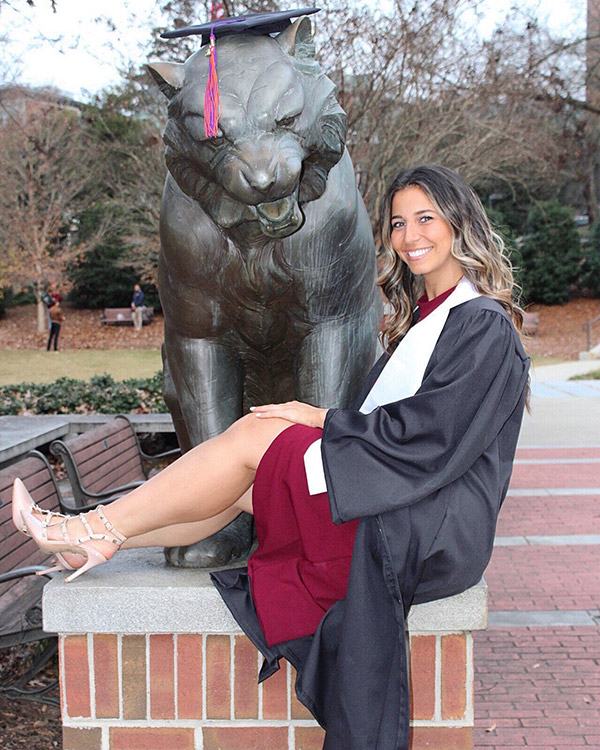
Delayne Di Gangi
My name is Delayne Di Gangi and I am a Wilson’s Disease patient. I just recently graduated from Clemson University with a degree in Bioengineering. My passion for bioengineering stems from my Wilson’s diagnosis and everything I have endured due to this disease. I want to be able to help other people with medical issues by dedicating my life to biomedical research.
Here is my story:
On March 30, 2015, I was a seemingly normal, healthy, 18-year-old enjoying the last semester of high school. I was a varsity soccer player and deciding between spending my college years at Cal Poly in California or at Clemson University in South Carolina the following fall. My parents took me to the doctor because my skin and eyes were yellowing dramatically. A blood test revealed that my liver enzyme, as well as most of my other blood work, was extremely elevated. I was immediately rushed to Northwestern Memorial Hospital by ambulance and admitted straight onto the transplant floor. Countless doctors began to stream in from hepatology, neurology, gastroenterology, ophthalmology and many other departments.
It was in the early hours of April 1st that we initially heard about Wilson’s Disease. The doctors explained the condition and its rarity. They said if left undiagnosed and untreated Wilson’s will result in a liver transplant. The doctors were fairly certain that I was suffering from end stage Wilson’s Disease and registered me on the national transplant list. My team of doctors assured us that once they confirmed that my ailment was Wilson’s, I would rise to the top of the list as a status one patient.
Many tests were done in search for this diagnosis. One test was done to analyze my urine, which was now as dark as coffee. The result was the first confirmation that I in fact did have Wilson’s Disease. On April 3, 2015 I was listed as status one. During my time in the ICU waiting for a lifesaving liver transplant, I underwent many procedures to prolong my life and keep me stable. One of which is called plasmapheresis. This was done by attaching two needles to the catheter tube that was inserted in my heart. Simply, my blood was being taken out of my body through one of the catheter tubes. It was then run through the apheresis machine. Once in the machine, my blood cells were separated from the plasma and the copper was stripped out by spinning the blood at high speeds. After, my blood cells were mixed with replacement plasma and the new mixed blood was then returned into my body through the other catheter tube. This procedure took two hours each time. My parents and I would sit and watch the large bag fill with another dark brown fluid that is supposed to be white. Beyond the plasmapheresis, I was also given medicine in hopes of eliminating the ammonia from my system before it started to negatively affect my brain. All of these were temporary treatments to extend my life.
Nearly one week after my original acute liver failure and diagnosis, on April 5, 2015 I received a lifesaving liver from a deceased donor. Today, in hindsight, I think about other symptoms I had throughout my childhood that could and should have pointed to Wilson’s Disease. I was tired and moody. I constantly wanted to chew on ice. The size of my legs was getting bigger each year even though I was an avid athlete. In fact, we even went so far to blame the enlargement on my years of soccer. We thought it must be muscle development from all the time I spent playing, but my legs had been filling with more fluid every year due to my failing liver. The larger missed symptom was when I was 16, two years prior to my liver failure. I had been suffering from extreme fatigue and could not chew enough ice. As a result, I had blood work done to rule out anemia. The bloodwork did not show signs of anemia but did show high liver enzymes! Tragically, this sign was misdiagnosed, and I was sent to an oncologist instead of a gastroenterologist. I was instead diagnosed with mononucleosis and my Wilson’s Disease continued to go undetected. My hope and purpose in sharing my story is to spread awareness about Wilson’s Disease. Through education, and stories like mine, there is a chance that someone who is suffering from Wilson’s will be diagnosed early enough to treat the condition efficiently and effectively before it can do great harm to anyone else.
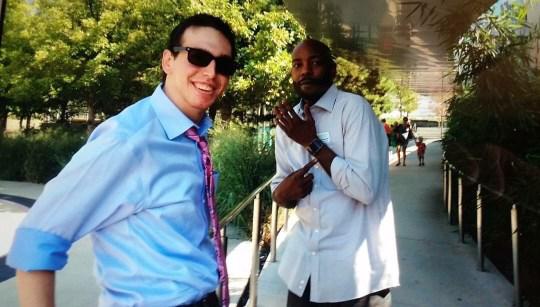
Mason Owings
Imagine you are 19 years old, you are about to enter your 3rd semester in college, and you live with your best friends from high school. One day you wake up, you notice that you’re drooling, can’t speak, and you hardly recognize yourself in the mirror.
That was me.
My name is Mason Owings, and I would like to share my life-changing experience.
I am a native of Dallas and graduated from Southlake Carroll High School. I took AP Calc, AP writing, and AP lit…graduating with honors in 2008. I was your typical, nerdy college student majoring in New Media Art. I had attended TCCC and had transferred to the University of North Texas. I loved the ladies, but not as much as I loved to play video games. World of Warcraft was my passion: my friends were mostly online, and I liked it that way.
In July 2009, I had a sudden increase in anxiety.
I started to worry about the little things: how was I going to get to class on time? How was I going to pay for textbooks? How was I going to find a job? I was entering my first semester at the University of North Texas.
I had a doctor’s visit and was diagnosed with General Anxiety Disorder and was put on medication. A month passed by and I started to lose my balance, and I started to drool a lot.
I was referred to get an MRI. I had an MRI which had evidence of prior strokes and new strokes which brought me to the hospital where I stayed for a few nights.
Flash forward to October 2009, I finally receive a diagnosis of Wilson’s Disease after being accused of huffing paint.
What is Wilson’s Disease?
Wilson’s Disease is a disorder that does not allow your body to process copper.
Instead, it stores it in your brain, liver, and kidneys which cause stroke-like symptoms, cirrhosis of the liver, and other issues.
This is a very rare genetic disease. Only 1 in 30,000 people are known to acquire it.
I had over a hundred doctors come to see me, that’s how rare it is.
But before you get better, you get worse! Thanks to the treatment.
I underwent chelation therapy which binds the copper to the drug, allowing the copper to exit the bloodstream through the urine. In doing so, the copper causes more damage to the affected organs as it exits the body.
For the next two years, I declined cognitively, and I lost my ability to walk and talk.
I entered Pate Rehab, where I regained my ability to walk and talk. I was discharged and entered a group home.
In 2011, I had some behavioral issues while I was in a group home. I got into a fistfight and got kicked out. Thankfully, my case manager referred me to My Possibilities, and that’s when things started to change for the better. My Possibilities is a continuing education program for adults with cognitive disabilities.
I joined My Possibilities in June 2012 as a Client, and because of the confidence, ambition, and a sense of purpose that the MP program provided, I was able to bring my cognitive skills back from a 4th-grade level to college level.
I recently graduated with honors from Collin County Community College with my associate’s degree. I plan to continue my education and experiences where I can, in turn, make contributions to those who are sometimes forgotten by society. I’m employed in a job I love as a full-time Transaction Specialist at JPMorgan Chase. I also volunteer three times a year as a camp consoler at Traumatic Brain Injury Camps.
I never noticed a disabled person before I became one. I never saw them in a crowd, never interacted with them, one on one.
It was only after I became disabled that I started to see them. They want the same things I want: friends, relationships, to experience life.
We want to be included, loved and to be special to others. I make every day count and assure that our hugely important people get every opportunity that I got so that they can reach their full potential.
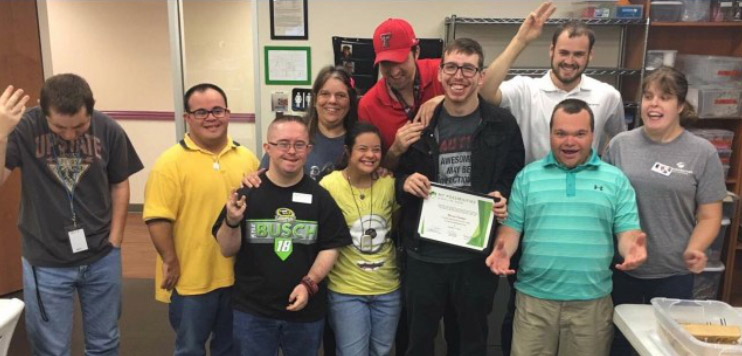
Donations
Why Your Donation Matters
Your donation to the Wilson Disease Association does more than keep the lights on—it powers education, awareness and action. With your support, we’re able to maintain vital resources like this website, produce trusted educational materials, fund critical research and host events that bring together patients, caregivers and medical professionals. Most importantly, your generosity helps raise awareness so more people are diagnosed earlier and treated effectively—giving them the best chance at a full, healthy life.
When you give, you’re not just supporting an organization—you’re joining a powerful movement to change the future of Wilson disease. You’ll stay informed about the latest in research and treatment, gain access to exclusive webinars and educational resources, and remain connected to a global community that understands. For more than 40 years, our shared commitment has fueled advances in care, deepened understanding, and amplified the voices of those affected by Wilson disease. Together, we’re building a stronger, more informed future.
WILSON DISEASE ASSOCIATION
Contact Us
- Toll Free: 866-961-0533
- Phone: 414-961-0533
Email: info@wilsonsdisease.org

